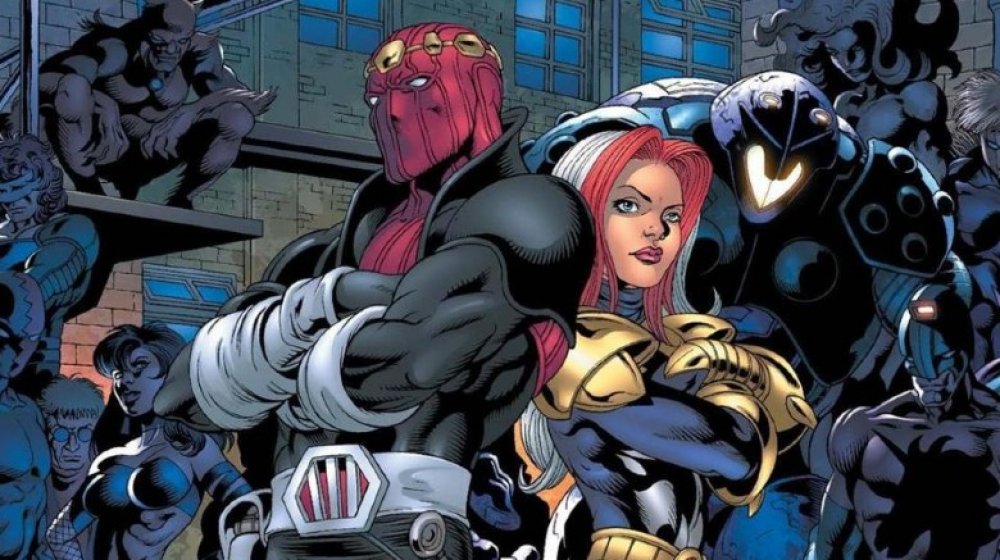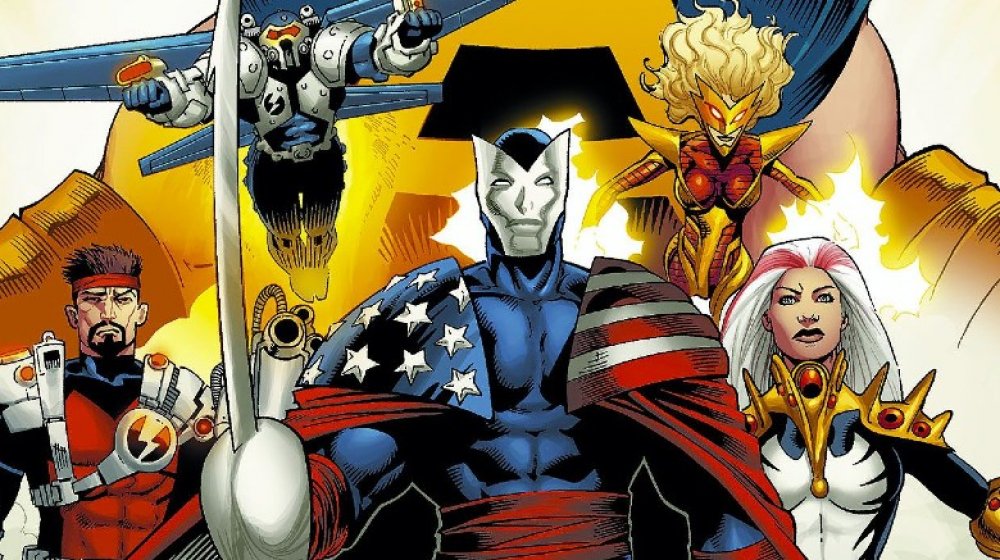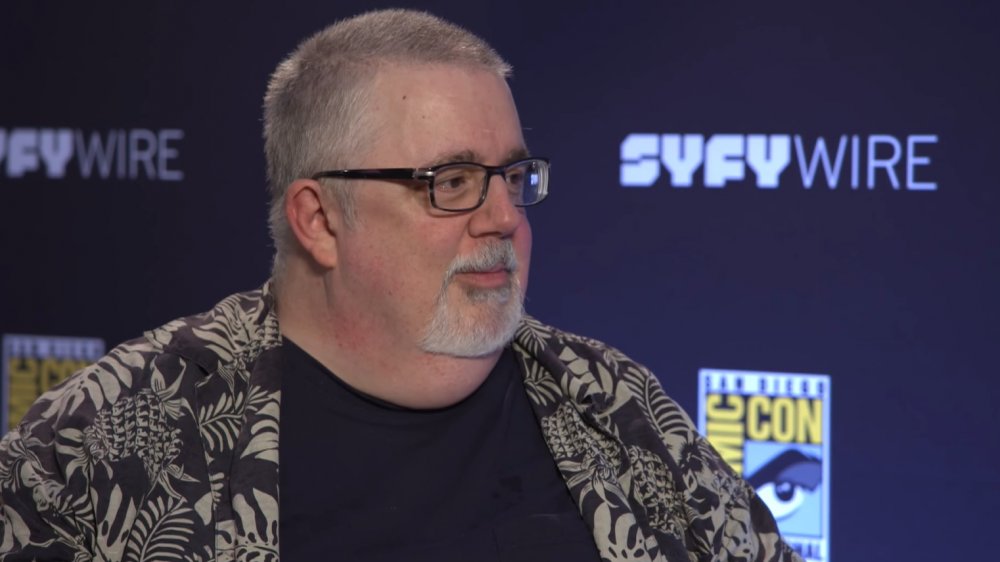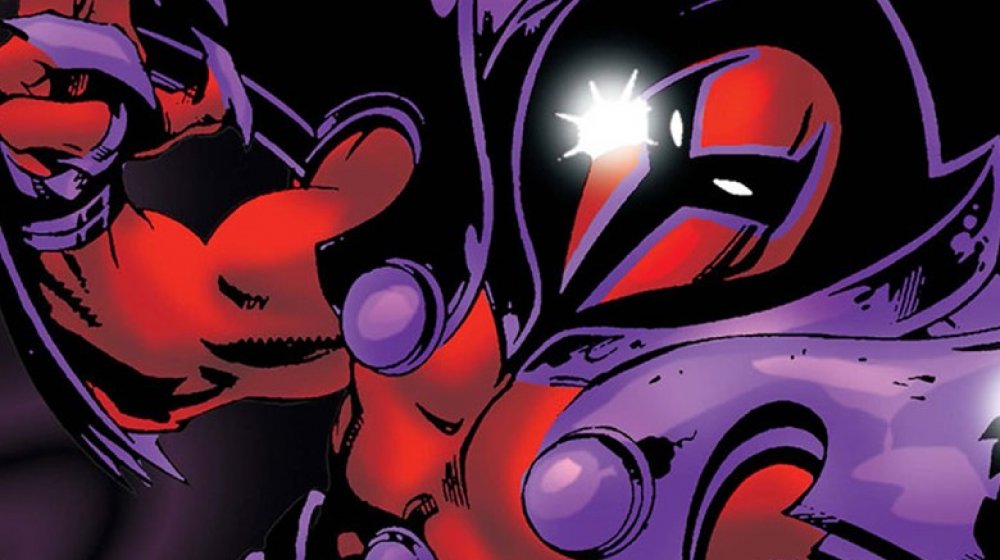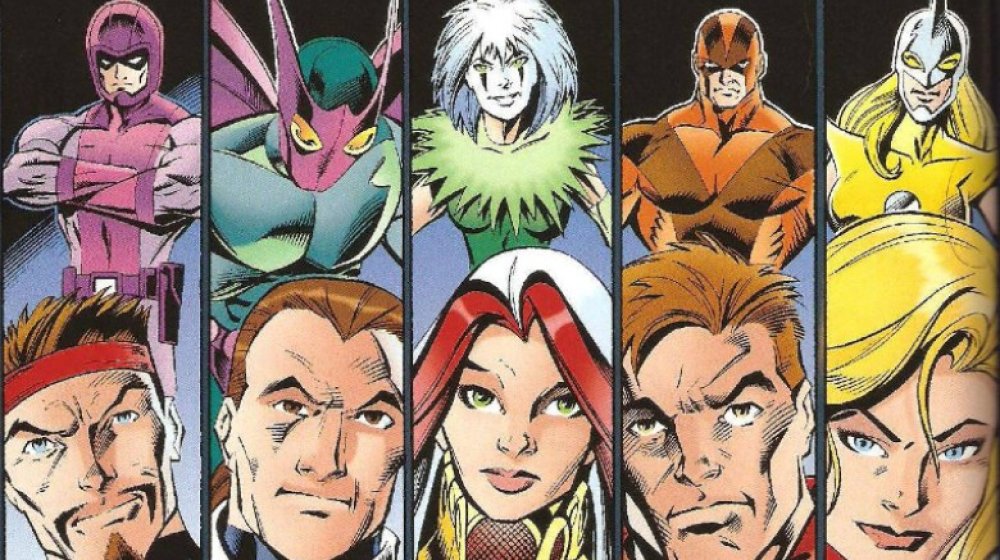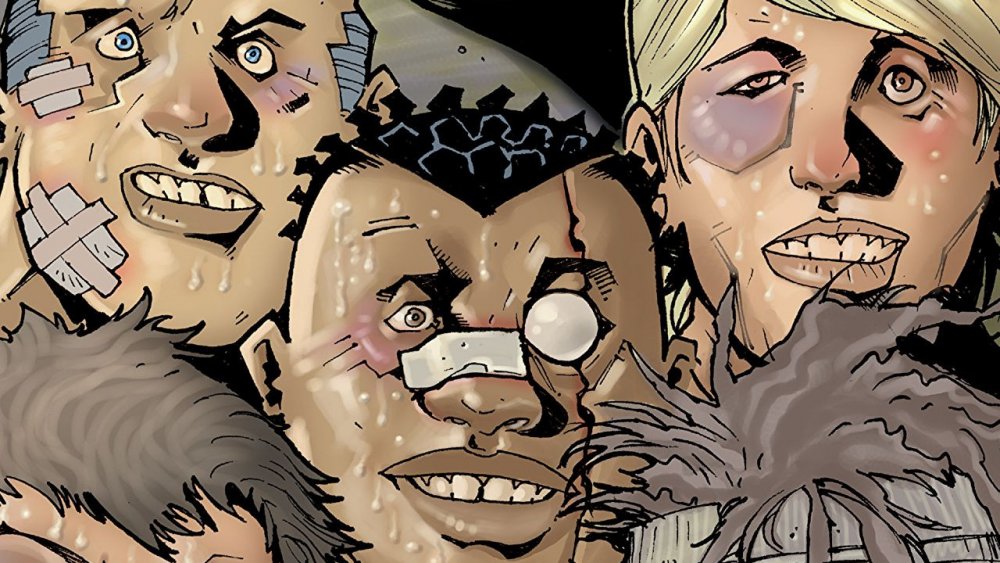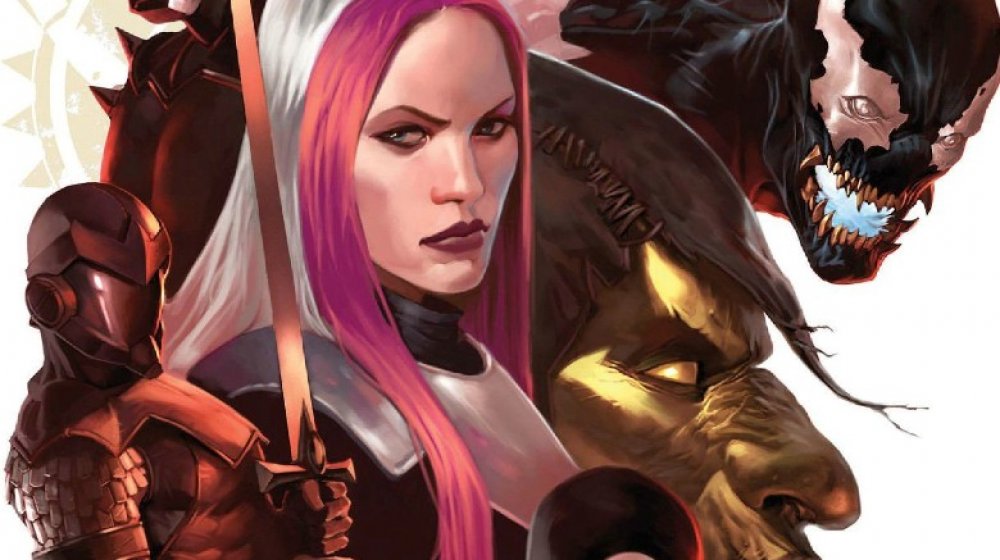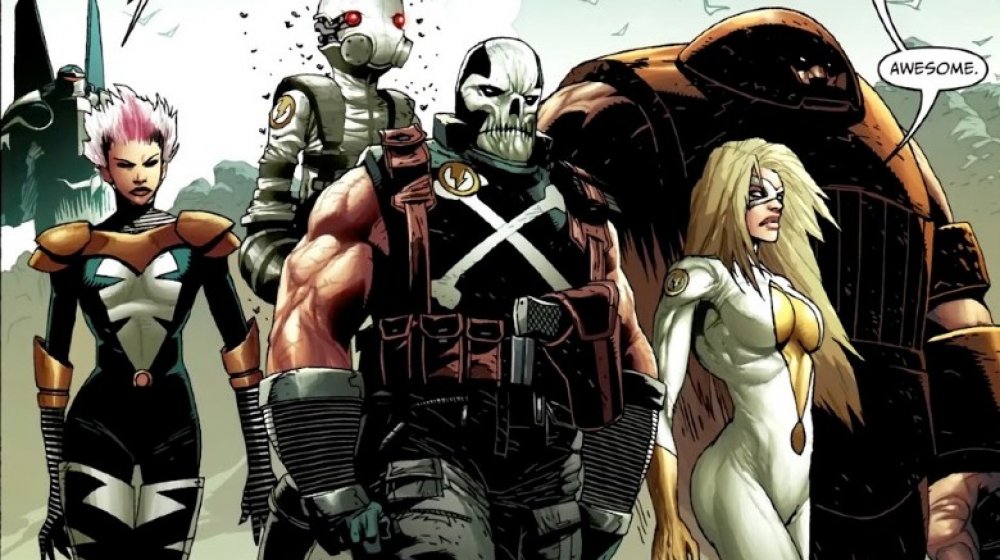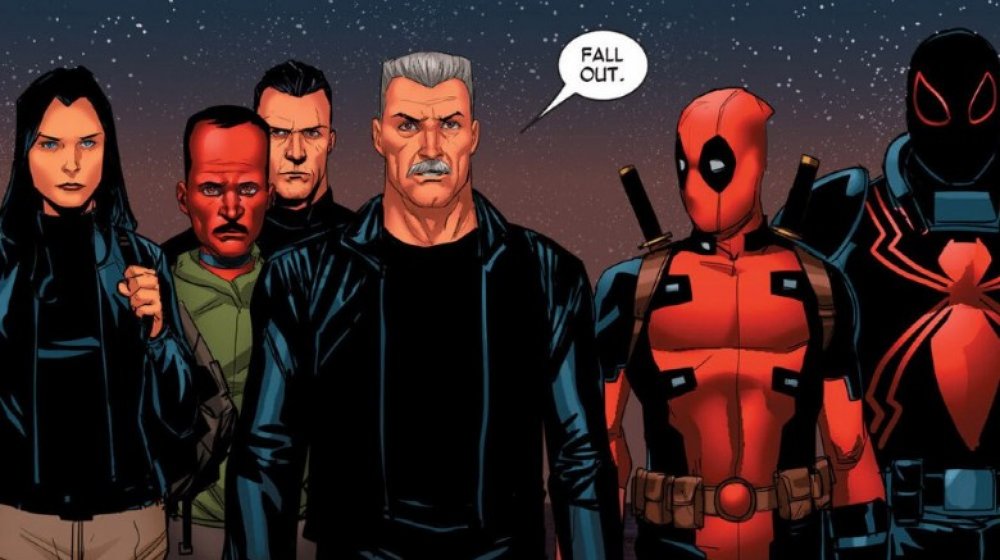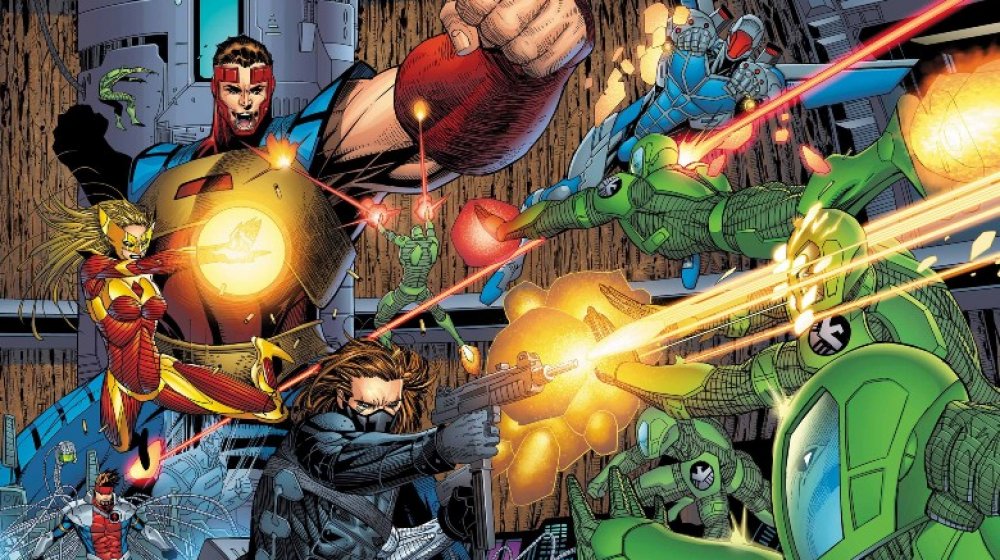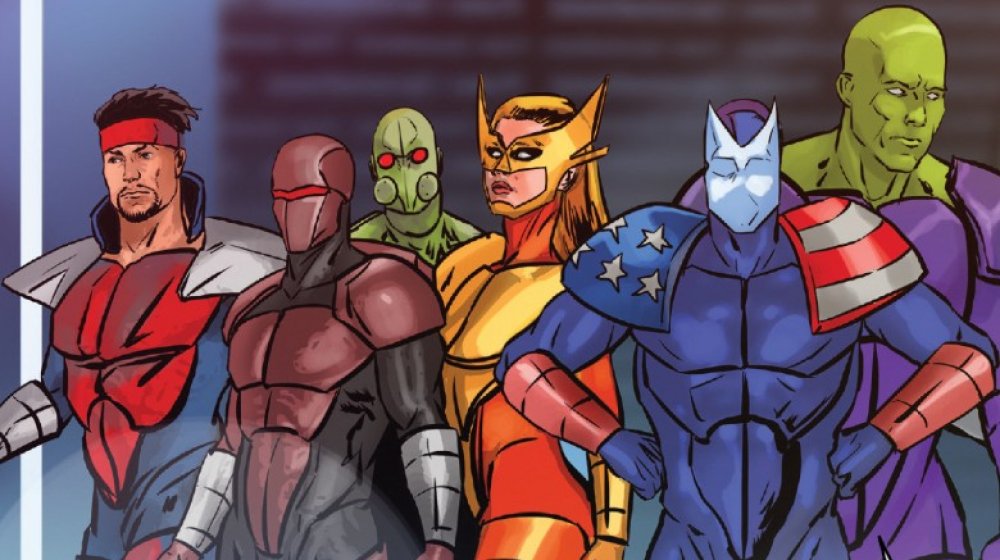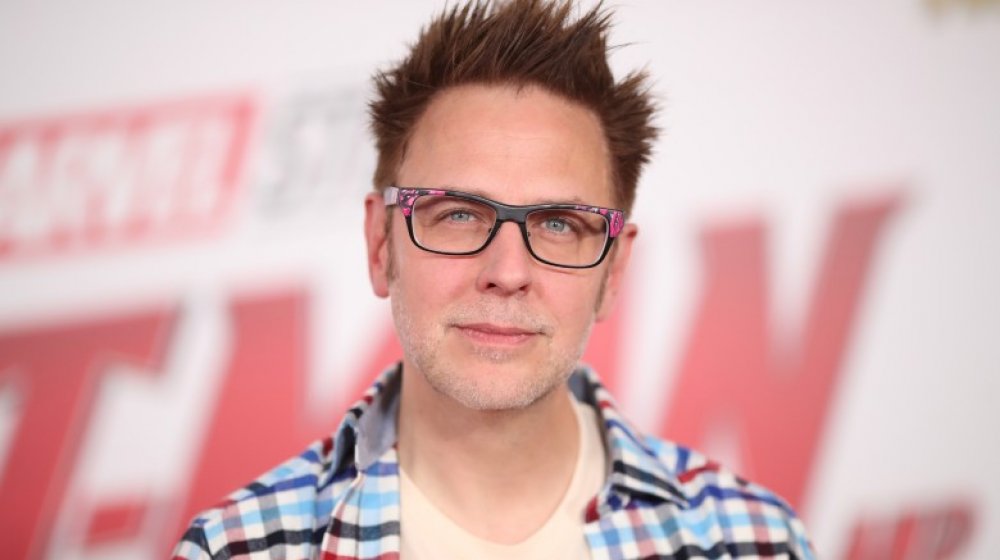The Untold Truth Of The Thunderbolts
At this point, the idea of supervillains becoming heroes doesn't feel like a particularly novel concept. For decades, comic book companies have been figuring out ways to capitalize on the popularity of their bad guys, either by rebranding them as gritty anti-heroes, having the government force them to work on their side, or keeping them bad but pitting them against someone worse. For example, the supervillain version of DC Comics' Suicide Squad has been active since the late '80s, even during periods when Task Force X didn't have a regular series to call home.
But Marvel's Thunderbolts are something different, and part of what makes them unique is the concept guiding the team has changed with each of its many incarnations. First appearing in 1997's Incredible Hulk #449, the Thunderbolts began as part of a clever plan by Baron Zemo to seize power, but they eventually became much more. In future Marvel eras, the Thunderbolts name would be used to describe underground fight clubs, the tools of pro-registration Marvel characters, and for teams of heroes more willing than your average Avenger to shoot first and ask questions later.
From their conception to their many incarnations, here is the untold truth of the Thunderbolts.
Justice, like lightning...
When he wrote 1997's Thunderbolts #1, creator Kurt Busiek knew exactly where he got the name for his new team. But later, it would turn out he'd made a mistake.
In the Thunderbolts series premiere, team leader Citizen V tells a gathered crowd of reporters that the name is inspired by lines from the 17th-century poet Thomas Randolph, lines that go, "Justice, like lightning ever should appear / To few men ruin, but to all men fear." But Busiek discovered he made the mistake of trusting another comic book rather than going to the source. He had first found the quote in an old issue of Captain Marvel, but upon checking Randolph's actual writing, he couldn't find the lines in the poet's work anywhere.
Randolph actually may have written the lines, but the truth is unclear. Rather than showing up in a standalone poem, the lines appear as dialogue in the 1620 play Swetnam the Woman-Hater Arraigned by Women. Some scholars believe Randolph was the play's author, but no one knows for sure. At the same time, some believe it was originally written hundreds of years earlier, in the 14th century by the Irish archbishop Milo Sweetman.
Regardless where it comes from, the first few words — "justice, like lightning" — show up on the cover of many of the team's comics, and the team has done its share of doling out both justice and fear.
Kurt Busiek, creator of the Thunderbolts
The Thunderbolts are the brainchild of Kurt Busiek, an acclaimed author who started his comic book writing career in the early '80s and whose star shot far in comicdom when he teamed up with Alex Ross in 1993 for the retrospective mini-series Marvels.
In a 1997 issue of Wizard, Busiek said he first came up with the idea of the Thunderbolts during a visit to his parents' home. To keep himself awake during the long drive there and back again, he'd assigned himself a comic book title with the mission to conceive "two to three years of continuity." On one such trip, he gave himself the task of coming up with a potential Avengers storyline, and the story he conceived was that "the Masters of Evil would ultimately conquer [the Avengers] by posing as new heroes and slowly replacing them."
However, looking at Busiek's career, it's clear the notion of villains becoming heroes is one he's been interested in for a while. A decade before Thunderbolts #1 was released, Busiek teamed up with James W. Fry for The Liberty Project, published by the now defunct Eclipse Comics. Liberty Project's protagonists were more like DC's Suicide Squad, in that they were supervillains working for the government in hopes of earning their freedom. In his creator-owned series, Astro City, one of the fan-favorite storylines is "The Tarnished Angel," published between 1998 and 2000 in which the aged supervillain Steeljack fights to redeem himself and save his friends from a murderer.
Onslaught made way for the Thunderbolts
Without the 1996 line-wide event Onslaught, there would be no Thunderbolts.
In 1993's X-Men #25, Magneto uses his powers to rip all of the adamantium from the mutant hero Wolverine. In retaliation, Professor X unleashes a psychic assault on Magneto, meant to drive all of the darkness and hatred from Xavier's old friend. This inadvertently leads to the creation of Onslaught — a character combining the darkest parts of both Magneto and Professor X. He's far too powerful for the mutants alone, and it takes the combined forces of the X-Men, Avengers, Fantastic Four, and the Hulk to take the villain down in 1996's Onslaught: Marvel Universe #1.
The Avengers and Fantastic Four willingly sacrifice themselves in order to defeat Onslaught. In truth, they're alive and transported to the Heroes Reborn world where their lives begin anew. But just about everyone thinks they're dead, and it leaves Marvel's Earth in a scary place. There are still heroes, of course, but the Avengers and the Fantastic Four were the ones everyone trusted. Anti-mutant prejudice stops the X-Men and their spinoff teams from ever fully gaining the public's trust, Spider-Man's always been half-outlaw due in no small part to the efforts of J. Jonah Jameson, and few of Marvel's citizens see the Hulk as a hero (least of all, the Hulk himself).
In other words, the post-Onslaught Marvel world is a vulnerable one desperate for heroes, and someone figures out a way to use that to his advantage.
The original Thunderbolts started as Masters of Evil
As chronicled in 1997's Thunderbolts Annual #1, Baron Zemo is planning vengeance against the Avengers when he once again reaches out to former members of the Masters of Evil. But when the Avengers and Fantastic Four appear to die in battle against Onslaught, Zemo is crushed, believing his vengeance is stolen from him. It doesn't take long for him to rally, realizing a wonderful new opportunity has arisen.
By designing new costumes — and in some cases, new powers and new suits of armor — Zemo turns his Masters of Evil into the Thunderbolts. The inventor Fixer becomes Techno, the Beetle becomes Mach-1, the sonic-powered Screaming Mimi becomes Songbird, the size-changing Goliath becomes Atlas, Moonstone becomes Meteorite, and Zemo takes on the role of the World War II-era British hero Citizen V. The plan is to fill the void left by the Avengers and the Fantastic Four and to gain enough trust to be allowed the kind of access that opens the doors to power. The reveal on the final page of Thunderbolts #1 that Marvel's new heroes are villains remains one of the fan-favorite surprise endings in comic book history.
But for most of Zemo's colleagues, the act of pretending to be heroes proves much more attractive than returning to villainy. That feeling only grows when they're joined by the young hero Jolt, who doesn't know their true identities. Eventually, all the Thunderbolts except Techno turn on Zemo, and they soon find a better leader in the form of the Avenger Hawkeye.
The Fight Club Thunderbolts
Starting with 2001's X-Force #116, the X-Men spinoff title took a bold new direction with the creative team of Peter Milligan and Michael Allred, forming an entirely new group of mutant heroes that are still adored by the public at large. The drastic change was a huge success, though X-Force was soon ended and the story transferred to the new title X-Statix.
In 2003, Marvel hoped to replicate the X-Force/X-Statix success with Thunderbolts, which is why should you ever choose to read all of the Thunderbolts comics in order, as you'll notice something very weird happening with 2003's Thunderbolts #76. Not only does the creative team change to writer John Arcudi and penciler Francisco Ruiz Velasco, but the usual cast of characters disappears and is replaced by an underground fight club comprised of down-on-their-luck supervillains like Armadillo and Man-Killer. The series' main focus is Daniel Axum, aka the Battler, and the question of whether or not he'll return to a life of crime.
The idea for this extreme makeover may have been inspired by X-Force, but it didn't enjoy the former book's success. The title was canceled with Thunderbolts #81.
The Civil War Thunderbolts
A year before the game-changing line-wide event Civil War, Baron Zemo forms a new team in 2005's New Thunderbolts #1. The new line-up includes mainstays Songbird and Atlas, as well as new members like Speed Demon, Radioactive Man, and Blizzard. Civil War sees the team's ranks swell considerably, as the group joins the pro-registration side of the conflict. Zemo recruits a veritable army of supervillains to his merry little band, which he uses against the villain Grandmaster. But battling the cosmic baddie takes its toll as 2007's Thunderbolts #108 finds Zemo trapped in a dimensional nexus.
A new team of much more vicious Thunderbolts is then formed to help the pro-registration heroes, including the Daredevil villain Bullseye, the Mac Gargan (aka Scorpion) version of Venom, and Lady Deathstrike. Not at all like the original team of criminals seeking redemption, these Thunderbolts act like vicious dogs let off their leash. In fact, it gets so bad that two members — Jack O' Lantern and Jester — are killed by the Punisher as they pursue Spider-Man in Civil War #5.
In the wake of Civil War, Norman Osborn is made the director of the team, with Songbird named as the leader in the field. After Osborn forms the Dark Avengers and folds Bullseye, Venom, and Moonstone into its ranks, publicly the Thunderbolts are said to have been disbanded. But in secret, Osborn has a covert squad of Thunderbolts at his command that includes the Yelena Belova version of Black Widow, the Eric O'Grady Ant-Man, and Ghost.
The Thunderbolts of the Heroic Age
After the 2010 crossover event Siege, Norman Osborn no longer finds himself in a position to give anyone orders, and the Superhuman Registration Act is repealed, allowing the anti-registration heroes to come out of hiding and rejoin the mainstream. One of those heroes, Luke Cage, is tapped to lead a new version of the Thunderbolts. It's a fitting choice considering while Cage was never a villain, his powers stem from experiments that he volunteers for while he's wrongly imprisoned for a crime.
Along with older members like Moonstone, Songbird, and Mach V, Cage's Thunderbolts include the Captain America villain Crossbones, the powerhouse Juggernaut, and the mute swamp monster Man-Thing. The team is pivotal in events like Fear Itself and Shadowland, but sadly, it's only a couple of years before the team is rebranded as the new version of the Dark Avengers. Their series ends with 2012's Thunderbolts #174, and the following month brings Dark Avengers #175. To drive the point home, Skaar — the Hulk's half-alien son — is on the cover, driving a sword through the Thunderbolts logo.
Thunderbolt's Thunderbolts
When Thunderbolts became Dark Avengers, a new version of the former team was born. One of the many titles Marvel started after the 2012 event Avengers vs. X-Men was a new volume of Thunderbolts that wasn't quite like any versions of the team before or since.
While most versions of the Thunderbolts are made up mainly of current or former supervillains, the protagonists in 2012's Thunderbolts #1 are mostly so-called anti-heroes or characters who are largely seen as heroes but whose more violent methods won't get them invited to the White House any time soon. Of course, their leader — "Thunderbolt" Ross aka Red Hulk — qualifies as a former supervillain, as does Red Leader (formerly the Leader, infused with Red Hulk's energy). Other members include the Flash Thompson version of Venom, Deadpool, Elektra, Punisher, and Ghost Rider.
This version of the Thunderbolts doesn't care about redemption, but instead, it wants to deal with supervillains and other terrorists in more permanent ways, unburdened with any kind of oversight or ethical codes. However, it's in part their commitment to a more extreme form of justice that leads to their downfall. Punisher eventually leaves the team when Ross stops him from killing the villain Doctor Faustus. Red Leader uses the opportunity to hatch a plan that sees Punisher tracking down and incapacitating each member of the Thunderbolts one-by-one, ultimately leading to the team's disbanding.
Bucky's Thunderbolts
After the events of the 2016 Avengers: Standoff! storyline, a new Thunderbolts team emerges under the leadership of Bucky Barnes, aka the Winter Soldier, and this time it has a very specific mission. S.H.I.E.L.D. had been using fragments of the powerful Cosmic Cube to secretly make changes to reality. One of the results of this is the creation of Pleasant Hill, an idyllic community comprised of supervillains whose memories were forcibly removed. It also leads to the unintentional creation of Kobik, a sentient version of the Cosmic Cube appearing as a little girl. As a result, Winter Soldier reforms the Thunderbolts — mostly from past members like Atlas, Songbird, Moonstone, and Mach X — to make sure S.H.I.E.L.D. can never use Kobik to change reality again.
However, the volume of Thunderbolts launched in 2017 didn't last long, folding after only 12 issues. It also has one of the darkest endings of a Thunderbolts series. At the same time Bucky is putting the Thunderbolts back together, Baron Zemo is reforming his Masters of Evil. Thunderbolts ends just as the crossover Secret Empire begins, and half of the Thunderbolts end up working once more under Zemo's thumb. It ends with Kobik presumed destroyed and the Thunderbolts defeated. Apparently seeing no better option, Atlas, Fixer, and Moonstone rejoin Zemo's villainous team.
The anti-Punisher Thunderbolts
In the volume of Punisher launched in 2018, the lethal vigilante makes it his goal to hunt down and execute all the remnants of Hydra left standing after Secret Empire. One of his highest profile targets is the villain Baron Zemo. Zemo approaches Wilson Fisk, aka the Kingpin — who's mayor of New York City at this point — to form an alliance against Frank Castle. Fisk agrees, but fearing citywide collateral damage, he's unhappy to learn that Zemo has formed a new team of Thunderbolts specifically to take out Punisher. The new roster includes Zemo once again making like Citizen V, Jigsaw, Moonstone, Radioactive Man, Ghost, Jigsaw, and the Fixer.
Knowing this is too much for him to handle on his own, Punisher recruits his own allies in the form of Black Widow, Moon Knight, Ghost Rider, Night Thrasher, and his ally Rachel Cole-Alves. Punisher and his allies manage to all but defeat the Thunderbolts in an intense battle, but Jigsaw escapes with Rachel as a hostage. Punisher saves Rachel, but he doesn't get to take his revenge on Baron Zemo. Ghost kills Zemo on Wilson Fisk's orders, who's furious with the Thunderbolts leader's handling of the affair.
James Gunn has Thunderbolts dreams
The Thunderbolts remain absent in the Marvel Cinematic Universe but not because no one's brought them up. In particular, Guardians of the Galaxy writer/director James Gunn went on record in 2014 that he wants to make a Thunderbolts movie. Speaking to ScreenRant, Gunn said he'd actually talked to Marvel Studios president Kevin Feige about it. "I will tell you, one time I was saying to Kevin [Feige]," Gunn said. "We were sitting on set together on one of the days he visited, and I said, 'You know, I really want to make Thunderbolts,' and he said, 'James, if Guardians does well you'll be able to do whatever you want so we'll see what happens.'"
Well, Guardians did a lot more than just "well," and so did its follow-up Guardians of the Galaxy Vol 2. Of course, a lot happened between Gunn and Marvel since 2014. Gunn was fired from Guardians of the Galaxy Vol. 3 in July 2018, only to eventually be rehired in May 2019, and in the interim, he signed on to write and direct The Suicide Squad. While there's certainly no law against it, it would be strange for Gunn to direct the signature supervillains-as-heroes teams for both Marvel and their Distinguished Competition.
Whether or not Gunn winds up having any involvement in the MCU Thunderbolts, reports persist that they're on their way, including a rumor that made the rounds in January 2020 that the team will be introduced in Disney+'s miniseries The Falcon and the Winter Soldier.
